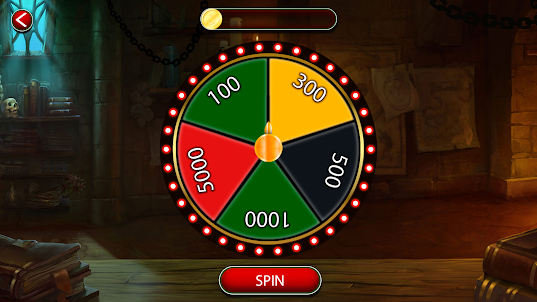By Corinne Purtill, Los Angeles Times
LOS ANGELES — As thick clouds of smoke rolled across Los Angeles in early January, Allison Shultz opened a freezer and took out a stash of pristine white pigeon feathers.
The ornithology curator at the Natural History Museum of Los Angeles County placed handfuls of feathers between two small screens and clipped them together with zip ties. She installed one of these homemade feather filters on the roof of the museum’s Exposition Park building, a few more in its surrounding gardens, another in her Gardena backyard.
Allison Shultz, ornithology curator at the Natural History Museum of Los Angeles County, holds bags of feathers that she placed on the roof of the museum during the wildfires in Los Angeles. (Christina House/Los Angeles Times/TNS)
As smoke engulfed the city, valuable bits of evidence accumulated in the feathers’ once-white barbs.
“It’s really weird to be a scientist who studies wildfire smoke,” Shultz said. “We don’t want there to be big smoke events. But then, at the same time, we do want data to understand things.”
Now stored in sealed plastic bags, the sooty plumes will help answer questions about how chronic smoke exposure affects birds, and what exactly the animals were exposed to during L.A.’s firestorms.
Allison Shultz, ornithology curator at the Natural History Museum, shows drawers of house finches at the museum, where researchers are studying bird feathers to determine the effects of wildfire smoke on birds. (Christina House/Los Angeles Times/TNS)
It’s part of a broader scientific effort to understand how a disaster of unprecedented scope will alter the region’s varied ecosystems, many of which were already stressed by a changing climate.
“Most fire ecology is done pretty remotely from human habitation, so therefore we have a bias in what we know in terms of how birds and vegetation and nature respond in quote-unquote, ‘natural areas,’ ” said Morgan Tingley, a UCLA professor of ecology and evolutionary biology who is collaborating with Shultz on the study. “We know much less about how those same processes happen when humans are very, very strongly influencing the environment.”
Microplastics research assistant Jessica Flores demonstrates the Raman spectrometer, which is the machine that will be used to analyze the bird feathers for carbon, at the Natural History Museum. (Christina House/Los Angeles Times/TNS)
Their research team will soon extract the pollutants that accumulated on the pigeon feathers. A machine in the museum’s mineralogy department called a Raman spectrometer will analyze the compounds, determining how much carbon on the feathers originated from burned organic matter like trees and shrubs and how much originated from combustion and other urban sources.
They’ll look for other contaminants arising from the burning of homes and vehicles, like microplastics and heavy metals.
Shultz and her colleagues were in the process of developing these methods well before January’s fires broke out. They anticipated studying birds’ exposure to smoke during Southern California’s typical wildfire season, which traditionally peaks August through October.
They didn’t expect that the smoke in question would originate so close to home.
UCLA’s Tingley lives about three miles from the Palisades fire’s eastern flank. He took copious notes on his observations of bird behavior as the fire raged.
Allison Shultz shows drawers of house finches at the museum, where researchers are studying bird feathers to determine the effects of wildfire smoke on birds. (Christina House/Los Angeles Times/TNS)
The yellow-rumped warbler is a migratory songbird that spends its winters in Los Angeles. For two days, Tingley recorded a constant stream of them flying in a pattern that looked like their springtime migration.
That was expected behavior for a highly mobile species, he said. We don’t know yet how L.A.’s resident bird species — some of which spend their entire lives within the area of a single kilometer (less than a mile) — will cope with a conflagration in their midst.
At the Natural History Museum, Shultz is well-positioned to compare birds from this era to those exposed to pollutants past. The ornithology department houses floor-to-ceiling archives of carefully preserved bird specimens.
On a recent morning, Shultz opened a wooden tray to reveal rows of house finches, a palm-sized bird commonly found in Los Angeles.
From one specimen’s spindly leg dangled a handwritten tag bearing the year of its death: 1917. Shultz gently lifted it from the tray.
“You see how this is black, and this is black,” she said, delicately pointing at the bird’s soiled feathers with a gloved finger. More than a century later, fine particles of pollution still clung to its feathers, dulling what once was a scarlet red breast to a mottled gray.
Related Articles
Wisconsin Supreme Court denies petition for review in Osceola Bluffs development case
Peruvian farmer’s case against German energy giant RWE could reshape global climate accountability
Ducks were once a conservation bright spot. Now they’re declining in the US, new report shows
A breakdown of major EPA deregulatory moves around water, air, climate
EPA head says he’ll roll back dozens of environmental regulations, including rules on climate change
“We’ve known that birds are very sensitive to smoke for a long time. Think about canaries in the coal mine, right?” Shultz said. Caged birds were used as living carbon monoxide detectors starting in the late nineteenth century — thanks to their highly efficient respiratory systems, the birds died from gas leaks long before human miners did.
But there is a lot we don’t know about how cumulative pollution affects these animals, and what impacts a catastrophe like this year’s fires will have. Does the carbon trapped in its barbs affect a bird’s ability to regulate its own body temperature? Which pollutants stick, and which ones molt away? Many species take dust baths to clean themselves — what if that dust is full of contaminants too?
Found dead birds are often donated to the museum, and Shultz was braced for an influx of new specimens as the fires raged. They didn’t come. Tingley also heard few reports of bird mortality.
It’s possible that most species were able to escape the smoke or minimize their exposure by reducing their activity during its peak and “it could be that we got lucky,” he said. “But these are questions that we’ll have to keep on trying to answer.”
©2025 Los Angeles Times. Visit at latimes.com. Distributed by Tribune Content Agency, LLC.



